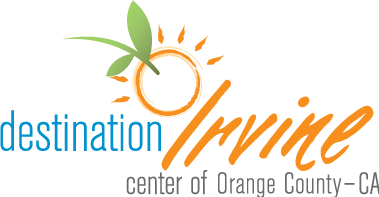A Living Landscape Laboratory

By CHRISTINE ROMBOUTS | LANDSCAPE ARCHITECT & SPECIFIER NEWS
The Orange County Great Park is a significant economic energizer. A potentially powerful stimulus, it can provide a much needed lift to several segments of the regional economy from building to professional services to retail, according to Economic Research Associates, a leading economic research firm.
The ERA study reports that planning, construction and other activity associated with designing and building the Great Park, along with adjacent residential and commercial development, could add hundreds of millions of dollars to Southern California’s Gross Regional Product and tens of thousands of new jobs to the region. Much of the preliminary work is “shovel ready” and more than 200 acres of the park are under construction. These projections and plans will impact the landscape and related industries from both the short and long-term perspectives.
Transforming a Sterile Landscape
The Orange County Great Park is a 21st century laboratory of urban development, smart growth and sustainability. Located in Orange County, California, the park is being developed by the City of Irvine on the former Marine Corps Air Station El Toro, a 4,700-acre decommissioned military base closed in 1999 as part of the Department of Defense Base Realignment and Closure (BRAC) process. Irvine annexed the base property in January 2004. Transforming the sterile expanse of a former Marine airbase into a living landscape is fundamental to the city’s vision of the Great Park.
Restructuring Land Use
On February 16, 2005, Marine Corps Air Station El Toro was sold in its entirety via an online auction conducted by the Department of Defense to the Lennar Corporation in the most successful base auction to date
($649.5 million).
The Great Park will be one of the largest metropolitan parks created in the United States in the past 100 years. Estimated to cost $1.4 billion at completion, the park is also one of the largest public/private sustainable projects underway in the U. S. At 1,347 acres (5.45 km2), the Great Park will be larger than New York’s Central Park, San Francisco’s Golden Gate Park and San Diego’s Balboa Park.
A Confluence of Talent and Community
The Great Park will truly be a park for everyone, reflecting the interests, values, cultures, and social and ethnic backgrounds of Southern California residents from all walks of life. The Great Park’s Design Studio is headed by Ken Smith, a New York City – based landscape architect, who was selected by the Orange County Great Park Corporation after an intense, international competition. Twenty-six design teams from throughout the world participated in the competition. Smith, an internationally known, award-winning landscape architect, was selected in January 2006. Led by Smith, the Design Studio team includes Mia Lehrer (Mia Lehrer + Associates), Enrique Norton (Ten Arquitectos), Steven Handel (Green Shield Ecology), Craig Schwitter (Buro Happold), Patrick Fuscoe (Fuscoe Engineering), and Yehudi Gaffen (Gafcon).
“Transforming the sterile expanse of a former Marine airbase into a living landscape is fundamental to the vision of the Great Park,” explains Smith. “The site is very large, flat and featureless. The biggest challenge we faced is bringing life back to the place, day lighting the streams, creating wetlands and lakes, and re-establishing the site’s habitat of flora and fauna.”
After more than three years of comprehensive planning coupled with extensive stakeholder input, the Great Park design reached an important milestone in November 2009, with the approval by the Irvine City Council of major construction totaling $65.5 million. The construction on the park’s western sector encompasses several key elements including soccer fields, community garden and citrus orchard, agriculture pavilion and park farm, picnic meadow, and the palm court featuring arts and cultural exhibition space. The development project is scheduled for completion by the end of 2012 with a number of features completed by the end of 2010.
Putting Every Resource to Good Use
The removal of more than 600 acres of hard pavement and the demolition of 120 buildings at the Great Park will be part of the construction phase of park development. These materials are recycled at a recycling center located adjacent to the park. Organic building materials such as drywall and wood are used as soil amendment, while other components, such as redwood beams, are used in new construction. Several base buildings are being preserved and reused as a part of the park, and many special military base features are being salvaged for memorial purposes.
Sustainability is a key component of the Great Park’s master plan, demonstrating new ideas, structures, systems, and technologies that will advance “green” knowledge, expertise, policies and products. Over time, the park is designed to be carbon neutral for site operations.
Twelve Sustainability Objectives
These objectives have been developed to serve as a guide in the design and operation of the Orange County Great Park.
- Biodiversity: Provide ecological habitats and corridors to reflect the local natural heritage and enhance biodiversity in the region.
- Water: Protect and conserve natural and potable water resources.
- Land: Remediate contaminated areas and develop healthy living soil.
- Energy: Reduce the use of fossil fuels and the emission of greenhouse gases.
- Materials: Minimize the impact of construction materials and the generation of waste.
- Air Quality: Improve air quality of internal and external environments.
- Heritage: Instill a sense of place that references the history of the site and the region.
- Well-Being: Protect and improve the health and productivity of those who visit and work in the park.
- Connection to Nature: Provide opportunities to experience nature and environmental education in the greater Orange County area.
- Inclusion: Provide park experiences that match the cultural and recreational expectations of all visitors. Encourage community participation and civic engagement.
- Transit-Oriented: Provide a transit-oriented development with less polluting transportation choices and connections within and beyond the park.
- Monitoring: Incorporate ongoing measurements and monitoring of key sustainability targets.
Prototype and a Precedent
The designation of the closed military base as a major metropolitan park followed a vigorous 10-year public debate in Orange County over whether to transform the base into an international airport or develop it into a park and residential community. A majority of Orange County voters decided in favor of a park with approval of Measure W on March 5, 2002. The following day, the Navy announced its intention to sell the base by public auction.
Since military bases bring millions of dollars in federal money to surrounding communities, finding successful models for future development of closed military facilities is vitally important. For this reason, the success of the Great Park model of a public/private partnership has generated considerable interest across the country. The sale and redevelopment of the Marine Corps Air Station El Toro has become the new prototype in base redevelopment.
For more information, please see LASN’s March 2008 article, “One Great, Big Beautiful Buffet: The Ecological Restoration of Orange County’s Great Park” www.landscapeonline.com/research/article/10427 or visit www.ocgp.org.
Leaving Nothing Out …
“The Great Park will be a great gathering place for people from many different walks of life with many different interests in all age groups,” says Mia Lehrer, FASLA, president of Mia Lehrer + Associates—a Los Angeles-based landscape architectural firm and a member of the Great Park Design Studio team. “The beauty of the park’s design is that there will be something here for everyone, from recreation, to culture, to history, to entertainment, to just taking it easy. It will be a people’s park.” Planned recreation, education, entertainment and cultural elements of the Great Park include: The Promenade, Aqua Chinon and Wildlife Corridor, Orchard Parking, plus: The Canyon Lake; Bowling Green and Linear Open Space Corridor; Cultural Terrace; Sports Park; Botanical Garden and Bridge; Trabuco Entry; The Time Line; Bosque and Pinetum.
https://www.landscapeonline.com/research/article/13121








